
Hire & Keep Top Talent with High-Performance Management
In an ever-changing global economy, how can employers create a workplace culture that supports and encourages high levels of employee productivity, satisfaction, and retention?


Founder and CEO of OneEleven Financial Wellness
In an ever-changing global economy, finding and managing top talent is becoming increasingly complex.
This challenge increased after the Great Resignation set in, causing an unprecedented number of resignations, with 24 million U.S. employees quitting their jobs between April and September 2021.
Employees are no longer bound to the local job markets, as a growing number of companies offer completely remote positions. As technological advancements inspired an even more significant change in traditional management models, the need for new, more progressive managing alternatives emerged.
Ultimately, any organization looking to remain competitive must ensure that they are hiring and retaining the best talent.
High-performance management is one way to achieve this. It aligns HR practices with business goals and focuses on employee performance.
Thus, it can be a powerful tool for organizational success.
High-performance management, or how companies assess performance, align organizational goals within the team, establish expectations, coach employees, give feedback and create individualized accountability.
Altogether, this can improve the overall employee experience.
Through an in-depth exploration of what this HR tool represents, our Shortlister article answers how employers can create a workplace culture that supports and encourages high levels of employee productivity, satisfaction, and retention.



High-performance management is a system of practices and principles that aim to help organizations achieve superior results by maximizing the performance of their employees.
It can help organizations attain their strategic objectives and maintain a competitive advantage when implemented effectively.
And yet, it’s not a widely-used practice.
Some companies still use the traditional assessment approach, which mainly focuses on reviewing things that have already happened. The executives would write detailed analyses and discuss them with their employees during annual performance evaluations, and their primary purpose is to justify salary and motivate the workforce.
According to Gartner, 95% of managers are unsatisfied with traditional performance reviews. Similar research by Globoforce showed that 51% believe annual reviews are inaccurate, and 53% say this appraisal doesn’t motivate them.
So, with its effectiveness and applicability brought into question, companies have shifted from the traditional employee managerial approach to a more progressive and effective solution.
Instead of writing detailed reports and focusing on what happened, managers and employees now focus on the future.
By shifting to high-performance appraisals, they define the goals together and discuss the current performance continuously as an alternative to waiting for the annual performance review.
High-performance assessment types vary depending on the company’s size and internal structure. However, managing high-performance teams includes these critical components:
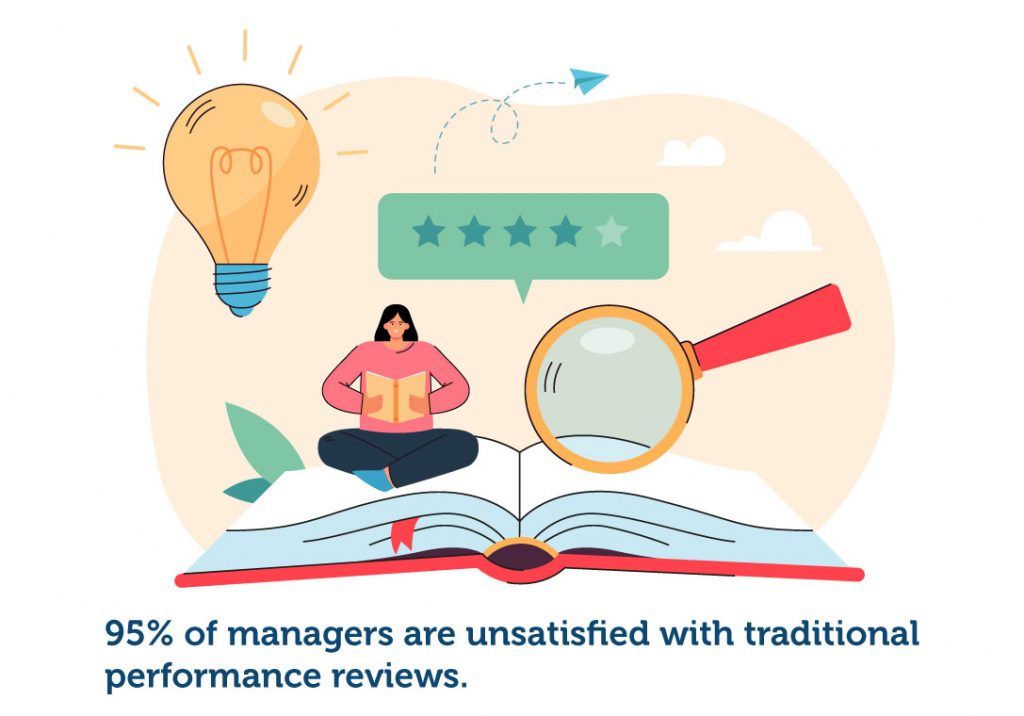
To answer what high-performance management is, we must reflect on over a century’s worth of evolution.
The concept was first introduced in 1908 by engineer and management consultant F.W. Taylor as a potential link between employee potential and productivity. Taylor’s scientific assessment principles were so convenient for that period that even Henry Ford used them to optimize his vehicle manufacturing.
In the following decades, performance management shifted its focus repeatedly, ultimately landing on employee motivation and engagement as the principles of good performance.
However, today’s high-performance culture revolves around teamwork, efficiency, good communication, and conflict resolution.
But the advancing growth of artificial intelligence in HR hints at another shift. Moving forward, employers will likely introduce quality performance feedback simplifying the process.
Big corporations like Adobe, GE, and Google redefine their performance management practices by focusing on business development by investing in human capital.
Regardless of the company’s size, it is vital to have a system that will help define employees’ roles, understand individual strengths and weaknesses, reward positive behavior, and provide constructive feedback.
Performance management statistics show just how crucial it is for employees and reveal the scope of its importance and value for organizations.
In fact, lack of acknowledgment by an employer account for 25% of all voluntary resignations. On the other hand, companies that have adopted continuous performance feedback surpassed their closest competitors by a 24% higher rate. Increased productivity, motivation, and achievement of the top goals are just some areas where these companies outperformed.
Organizations whose employees are more satisfied with their approach to performance appraisal are three times more likely to manage change, two times more likely to innovate effectively, and 1.3 times more likely to meet their financial goals.
It only shows that engaged and motivated employees are more productive and profitable for the company.
One of the critical factors for an organization’s progress is how employees embrace their work. Those who are fully engaged stay longer in their work positions, are more productive, and bring more profit to the company.
A McKinsey research reveals that a business with high-performing company culture can create three times higher returns for stakeholders.
Still, this is only one segment of building such a workplace culture.
There are as many high-performance culture models as there are organizations. Each is unique in its own way, just like the team they are part of.
Still, a few fundamental elements create the foundation for a thriving high-performance culture, including:
These main principles answer the company’s purpose and the lengths employers will go to achieve their business goals. From communicating clear values and trust to empowering and acknowledging employees, building a high-performance culture begins with the company’s intentions to improve and grow.
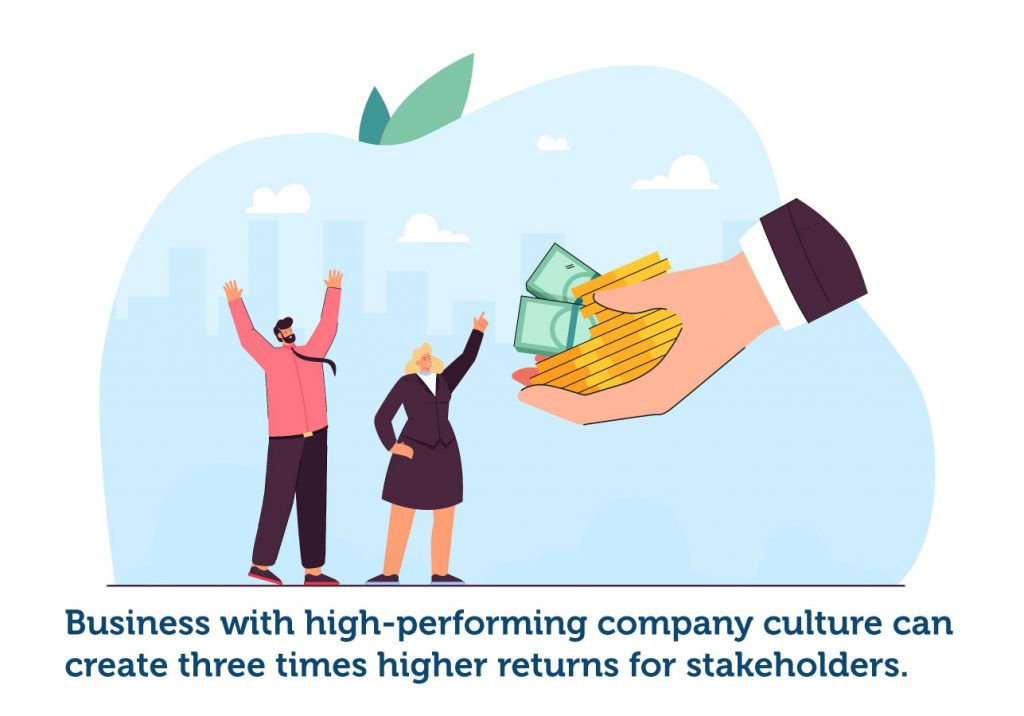
Company culture encompasses everything from company values to the treatment of its employees. It shapes the organization’s strategic objectives, management style, and internal policies. When a company culture focuses on performance, it improves talent retention, employee engagement, and financial results.
A high-performance culture represents a set of values that help organizations achieve a high level of growth. It also creates performance processes that help HR departments support workers throughout their career journeys.
So, what must be done to create a high-performance company culture that feels authentic and can attract and retain top talent?
The first and most vital step to creating a high-performance culture within the organization is to clarify company values, vision, and mission, then communicate them to the workers.
Employees directly feed into overall business success by feeling a sense of purpose in their everyday tasks.
A large-scale study by Edwin A. Locke and Gary P. Latham, published in the American Psychologist, showed that setting and committing to a goal significantly improved employee performance.
One of the foundations of the performance management process is setting ambitious but realistic goals. Furthermore, understanding how an organization’s goals and objectives align with everyday tasks helps individuals in the company better embrace their job.
While most companies are already aware that these goals need to be SMART (specific, measurable, achievable, realistic, and trackable), companies like Google and Intel often use “Objectives and Key Results” (OKRs). A critical difference between OKRs and SMART objectives is in the level of ambition.
Objectives tend to be far more ambitious compared to common goals.
They enable teams and individuals within the organization to step out of their comfort zones and learn how to prioritize their work.
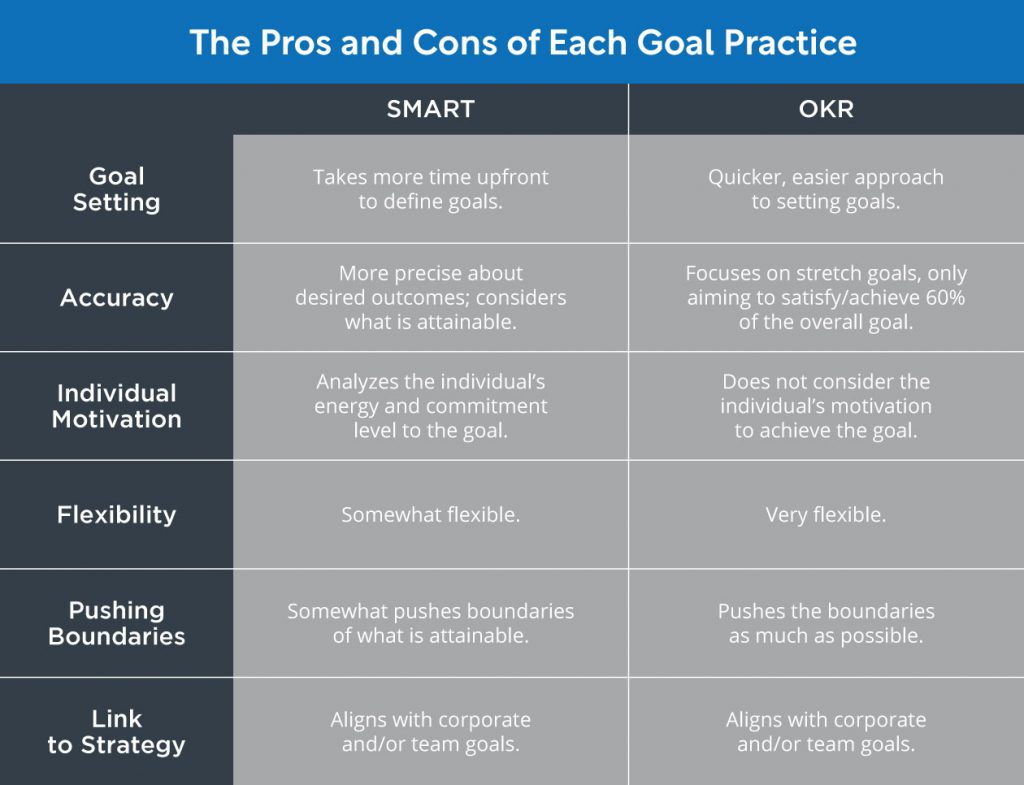
Part of the high-performance culture is empowering employees to make decisions, solve problems independently, and reach set goals in their own way.
In this type of environment, the role of the managers is to provide support and guidance, help the employees collaborate, and work more effectively.
Effective and continuous performance feedback helps employees grow into their roles, improve their skills, and achieve their full potential.
In a high-performance environment, feedback can be formal and informal.
However, informal feedback is more effective in this setting because it is spontaneous, focused on a specific situation, and provides an opportunity for a two-way interaction between manager and employee.
In a genuinely high-performance environment, feedback is multi-directional.
That means the feedback is given “top-down” from managers to employees and “bottom-up” from employees to managers. Transparent and continuous feedback allows for constant improvement of all internal issues and processes in the organization.
A growth mindset in the workplace is essential for creating a high-performance culture in the workplace.
Employees who feel they can grow and develop within their roles show better engagement and are more productive. By implementing continuous learning and development, they build their skill set, which reflects on their everyday tasks, problem-solving, and accomplishments.
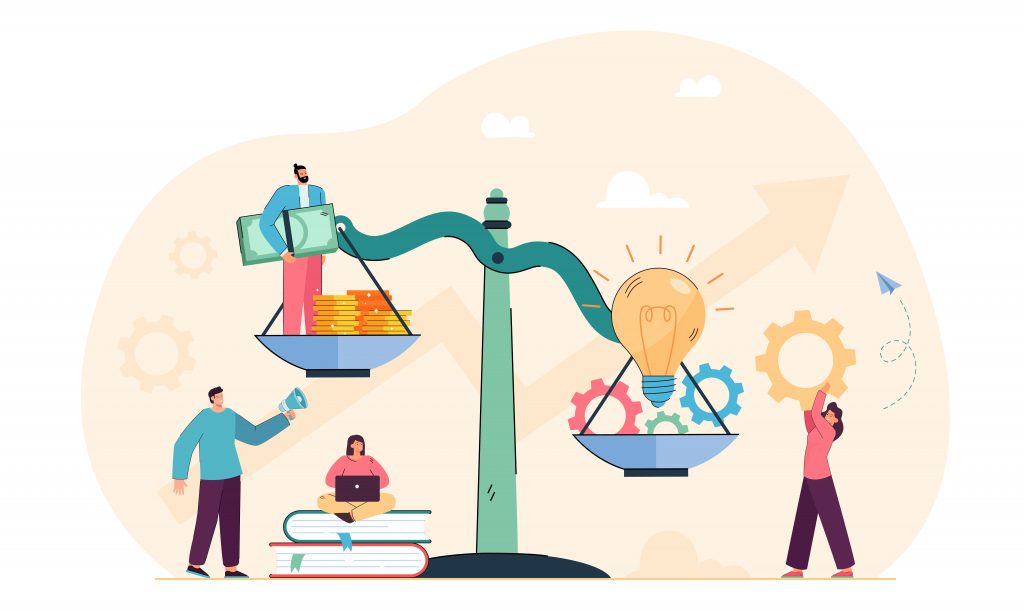
Well-established standards and procedures indicate how an organization operates daily.
Clarifying roles and aligning authorities ensures that everyone understands who does what. When followed, excellent processes enable mission fulfillment and efficient fiscal resource management. They provide discipline and consistency, laying the groundwork for scalability.
Synchronization of critical events and actions is made possible by reasonable procedures. They assist new employees in coming up to speed fast and guarantee that crucial choices are made with appropriate diligence. A fundamental standardization component is an effective performance management system that aligns human performance with organizational aims.
Appraisal systems enable communication between leaders and direct subordinates, allowing for goal formulation, tracking progress over time, and reinforcing corporate principles.
After all, most employees want to feel they are growing within their roles.
Working on a high-performing team transcends individual effort.
That’s because these teams are more than a group working within the same company. Instead, each constituent has a clear individual role yet works to achieve a collective goal.
High-performing teams share the company vision.
Hence, promoting a corporate culture of good teamwork can result in many benefits, including solving complex problems, increasing job satisfaction, and enhancing creativity and performance.
A paper by the National Bureau of Economic Research reveals that nine out of ten CFOs believe improving the company culture would expand their business value.
Thus, building one that nurtures high-performing teams can potentially increase the business revenue by attracting top talent, increasing the overall employee performance, improving job satisfaction, or boosting team creativity and problem-solving.

Synergized teams with clear roles and responsibilities that share the same values, mission, and vision and work on achieving a mutual goal are highly beneficial for a company. This is especially true when the company culture nurtures and supports high-performance teams.
In fact, 97% of employees and executives believe that a failure to align these ideas within a team can negatively impact the assignment.
Ultimately, by giving and receiving feedback, encouraging open communication, creating a sense of purpose and mutual accountability, as well as interdependence and trust, employers help to form teams with a high level of creativity and innovation.
With the right approach, high-performance teams can surpass any other working group or individual in generating new ideas and their successful implementation.
A high turnover rate destroys teams.
Employees are indispensable in highly functional teams focused on growth, where each person completes a specific task.
Companies must address employee turnover for a team to perform well.
Creating a culture that supports employees on their career journey within the company is an excellent promoter for overall talent acquisition and long-term retention.
Happy employees tend to perform better and drive growth.
However, despite a slight increase over the past few years, the level of employee performance remains at a concerningly low level at only 21%, up from 15% in 2017.
Considering how one of the biggest employee engagement drivers is good teamwork, setting up high-performing teams with team members who share the same corporate values can significantly benefit companies.

As valuable as they can be, high-performing teams also need to overcome some unique challenges to attain optimal results.
The reader poll in SmartBrief on Leadership reveals that getting employees to act as a team rather than as individuals is the biggest roadblock to high-performing teams, with 41.2% experiencing this challenge.
Additionally, the remaining challenges when managing high-performing teams were:
Only 4.8% of the respondents believe that high-performing teams come with no challenges.
Other potential hurdles can be poor-decision making, lack of diversity, inadequately defined responsibilities, unclear goals, or non-participating leadership.
Ultimately, it all comes down to addressing trust within the team, aligning individuals with corporate goals, balancing strong personalities, and getting high-performers to be good team players. As a result, this increases efficiency and builds a cohesive working environment that focuses on growth.
Defining or specifying the exact characteristics of performance management is challenging since the process can differ based on the organizational goals and vision.
However, the high-performing measurement approach ideally would:
Understanding the effect a high-performance culture has on business performance, companies should prioritize creating such an environment for their employees.
Some ground rules of creating a high-performance culture include having clear company values, open communication, tracking employee goals, and giving and receiving feedback.
However, to build it from scratch, employers must focus on changing the perception and behavior on all management levels and within all teams and integrate the key points into the corporate culture.
An SHRM report explores a four-step process that helps companies build and sustain a high-performance workplace culture by improving the frequency and efficiency of high-performance management behavior.

Good performance management has an irreplaceable effect on employees and their quality of work.
Attracting and managing happy employees through a high-performance work culture creates an organization that is:
There are many examples of high-performing cultures of companies leading the change for the workforce.
For instance, to develop a more fluid system where employees can receive timely and regular feedback, Accenture eliminated 90% of its previous management tactics and got rid of its annual reviews. Instead, the company designed an app for communicating feedback, creating a high-performance environment based on regular assessment.
Other examples are companies like Adobe, which used performance assessment tactics to cut down voluntary employee resignation by 30%, or Google, with its unconventional approach of goal setting instead of formal employee rankings.
A crucial component of performance management is employee development.
These two are interconnected, and one’s success largely depends on how well the other performs.
According to the global data report by Degreed, up to 46% of employees are more likely to leave if they feel a company doesn’t invest in their professional growth.
Another study on “Performance Management and Employee Development” explores the correlation between the two through the scope of employee appraisal and finds that performance management significantly affects the quality of employee work.
In fact, a good feedback approach can influence employee learning and development and identify the need for further performance improvement.
Thus, growth-driven organizations should address this by designing a performance management system that can adequately implement employee training and development strategies.
The COVID-19 pandemic shifted workforce priorities.
Employees are now striving for careers instead of jobs and putting their well-being first.
To attract and retain talent, the company must foster an empowering workplace culture that will motivate the employees, giving them a reason to join the organization and stay loyal.
According to a study by Dieleman, M., Toonen, J., Touré, H., “The match between motivation and performance management of health sector workers in Mali,” besides a good salary, the primary motivators are recognition, trust, and employee training.
Setting up quality performance management strategies that focus on strengthening employee motivation can help with all these aspects, resulting in higher retention rates.
Performance assessment is more than an HR tool, and its benefits should be explored from an organizational point of view.
In fact, a study on “The impact of performance measurement in strategic planning” by E. Tapinos, R.G. Dyson, and M. Meadows, exploring its importance, concludes that performance management is one of the four pillars characterizing the practice of strategic planning, making these two corresponding aspects an indispensable part of business growth.
This is even more so the case when it comes to large corporations or businesses operating in fast-changing environments since they tend to use performance measurements more in their strategic planning.

A Deloitte study reveals that high-performing companies use a reward system for performance to differentiate and acknowledge their employees. They also use this approach to instill a sense of progress and growth in the workforce through financial wellness, putting these types of organizations one step ahead in the talent market.
According to Dani Pascarella, Founder and CEO of OneEleven Financial Wellness, you have to invest in your people to be an employer of choice.
“Every dollar spent on your employees is an investment, not a cost,” explains Pascarella.
“This includes perks, benefits, training, and anything that helps employees feel valued, which creates a sense of loyalty to the company.
Financial wellness is part of the next wave of benefits for progressive, early-adopter companies that are seeking top talent.

The last few years have been a real eye-opener, showing everyone just how quickly the workplace as we know it can change—moving from a traditional to a hybrid work model, resigning jobs at astounding rates, and even considering the possibility of a complete change in the work week, just to name a few.
Thus, predicting the direction high-performance workplace culture will take in the future would be futile.
We know with certainty that employees are looking out for themselves more than they once did. Hence, companies should get on board with the changes to stay relevant in the talent market.
It means they should listen to the needs of their workers, shift the focus of their benefits to quality instead of quantity, and move away from traditional into high-performance appraisal as a great way to hire and keep top talent.
Research shows that high-performance management works.
It allows businesses to identify their top performers and develop their skills further. But it’s also an excellent way to establish the ground rules of a company culture that attracts and retains top talent.
That way, businesses will have a more motivated and cohesive workforce better equipped to handle challenging tasks.
Disclosure: Some of the products featured in this blog post may come from our partners who compensate us. This might influence the selection of products we feature and their placement and presentation on the page. However, it does not impact our evaluations; our opinions are our own. The information provided in this post is for general informational purposes only.
Browse our curated list of vendors to find the best solution for your needs.
Subscribe to our newsletter for the latest trends, expert tips, and workplace insights!

In an ever-changing global economy, how can employers create a workplace culture that supports and encourages high levels of employee productivity, satisfaction, and retention?
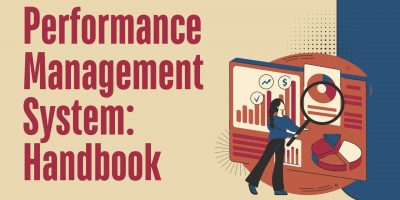
Uncover the latest strategies and tools to elevate your organization’s performance management practices for a more efficient and high-achieving workforce based on a good company culture that attracts and retains A players in the industry.

Discover the value of performance management tools in the modern business environment and explore top-performing software programs and their features.
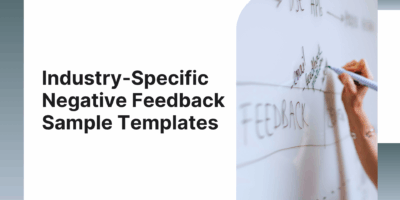
Negative feedback doesn’t have to feel negative. These industry-specific examples show how delivery and intent can turn difficult conversations into growth opportunities.
Used by most of the top employee benefits consultants in the US, Shortlister is where you can find, research and select HR and benefits vendors for your clients.
Shortlister helps you reach your ideal prospects. Claim your free account to control your message and receive employer, consultant and health plan leads.